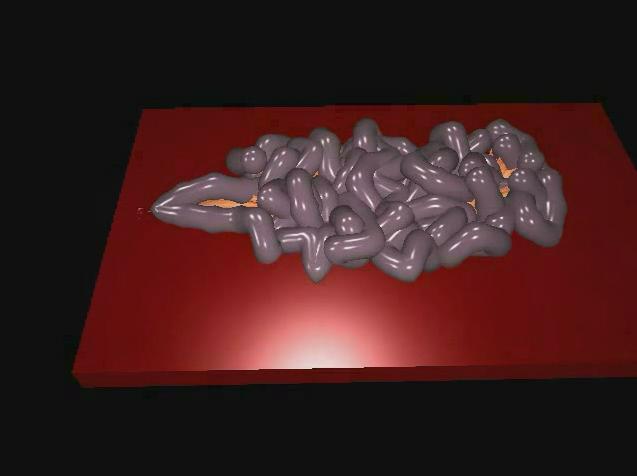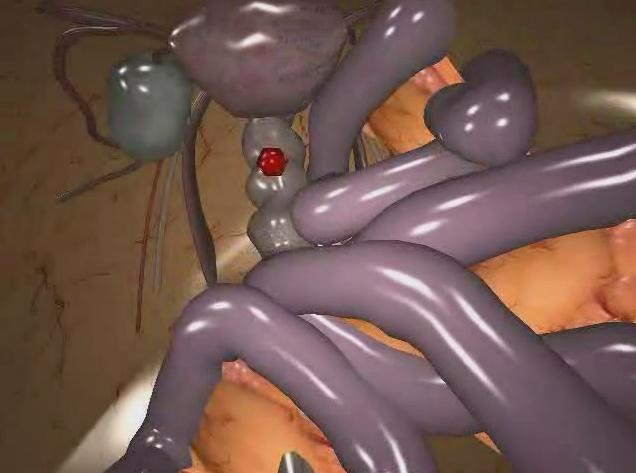This research work is aimed towards the development of a VR-based
trainer for colon cancer removal, that enables the surgeons to
interactively view and manipulate the concerned virtual organs as
during a real minimally invasive surgery. First, we present a
method for animating the small intestine and the mesentery (the
tissue that connects it to the main vessels) in real-time, thus
enabling user-interaction through virtual surgical tools during
the simulation. We present a stochastic approach to collision
detection, which provides efficient collision for highly
deformable, self-colliding objects. A simple and efficient
response to collisions is also introduced in order to reduce the
overall animation complexity. Second, we describe a new method
based on generalized cylinders for fast rendering of the
intestine. An efficient curvature detection method, along with an
adaptive sampling algorithm is presented. This approach, while
providing improved tessellation without the classical
self-intersection problem, also allows for high-performance
rendering, thanks to the new 3D skinning feature available in
recent graphics hardware. The rendering algorithm is also designed
to ensure a guaranteed frame rate. Finally, we present the
quantitative results of the simulations and describe the
qualitative feedback obtained from the surgeons.
|





